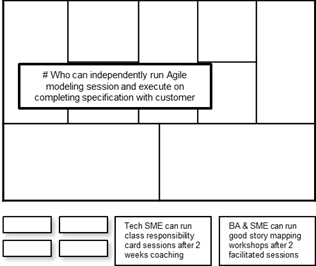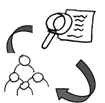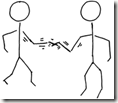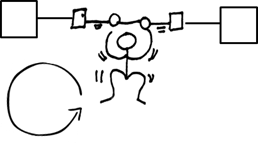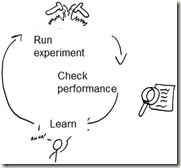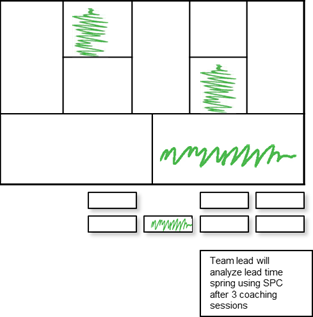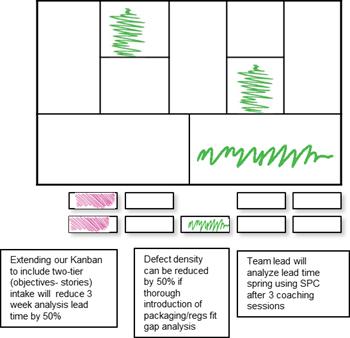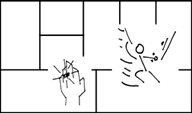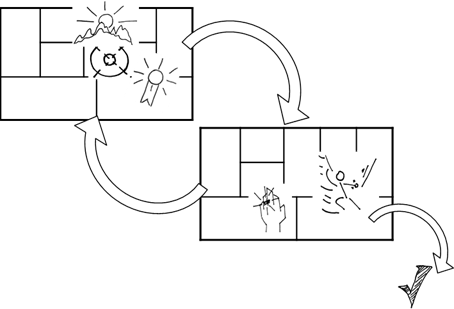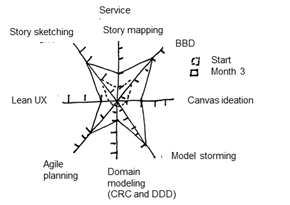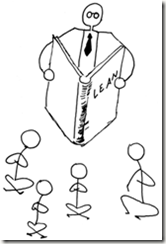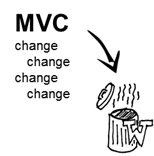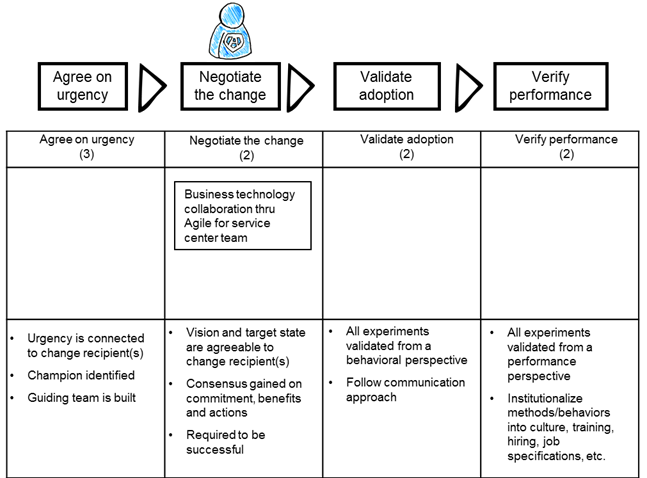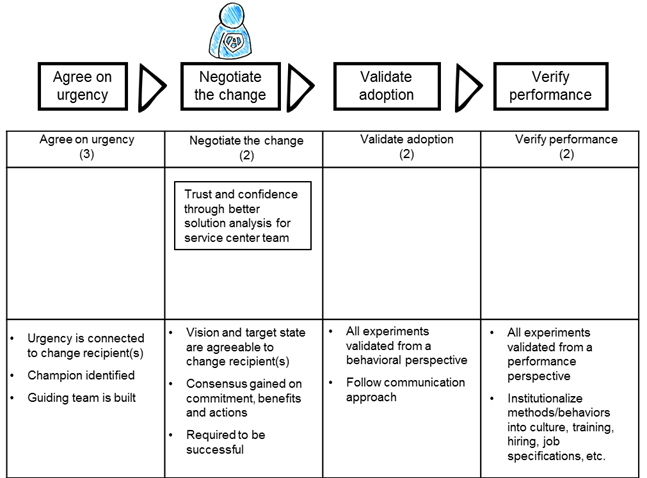I've also discussed how to use the Validated Change Lifecycle to order the kind of actions and experiments we want to execute in order to de-risk our change program.
The type of change that we have been talking about so far, has been at the team or department level. However, we can also use the Change Canvas on a very different scale, to support planning for large-scale organizational transformations. When using a Change Canvas this way, we call it a Transformation Canvas. The Transformation Canvas can help senior executives who are looking to rewrite the Cultural DNA be any of their entire organization, and want to execute large-scale change across the enterprise.
Why Do We Need a Transformation Canvas?
as a quick review of how lean change work so far, change agent can work with a group or cohort of change recipients to execute a set of improvements experiments as a Minimum Viable Change.

A Change Canvas is used to reflect all the components of the minimum viable change, and that canvas is then validated first through discussion, then by checking behavior, and finally by checking performance.

Change agents can de risk and maximize learning for a change by moving Minimum Viable Changes through the validated change lifecycle.

As a change program scales out, multiple change agents may work on multiple Minimum Viable Changes can in parallel, effecting numerous changes on an organization.
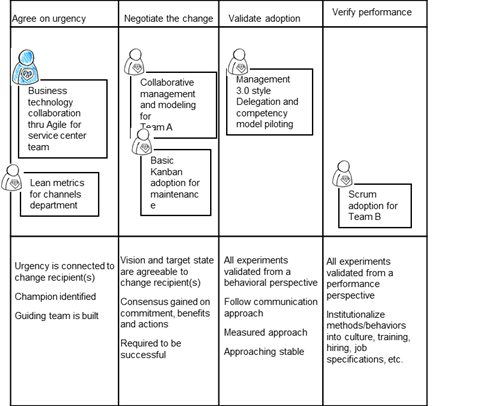
Different change agents will come up with different solutions to the unique problems of the change recipients they are working with. This can be considered a good thing, different groups of change recipients will often require different solutions that match their context.
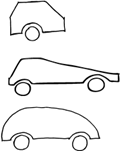
However, taken to the extreme, executing different changes in different parts of the organization can result in a solution that doesn't make sense or work very well as a whole.

Different lean and agile methods place emphasis on different things, and even may contradict each other in the advice they give. Without care change recipients and other chain stakeholders can become confused.

Change Agents working on an organizational transformation, one where a larger number of Minimum Viable Changes will be introduced to the organization, should spend some time on planning and modeling what a transformation can look like from the perspective of the entire organization. Just like a Minimum Viable Change, elements that make up the model for a transformation level change can be thought of as assumptions that can validated through experimentation.

An organizational transformation model can be used to ground and otherwise constrain the various minimum viable changes that pass through an organization. When a change agent begins work on a new minimum viable change the first point of reference is the organization organizational transformation model. Does the minimum viable change fit within the overall objectives of the organizational transformation?
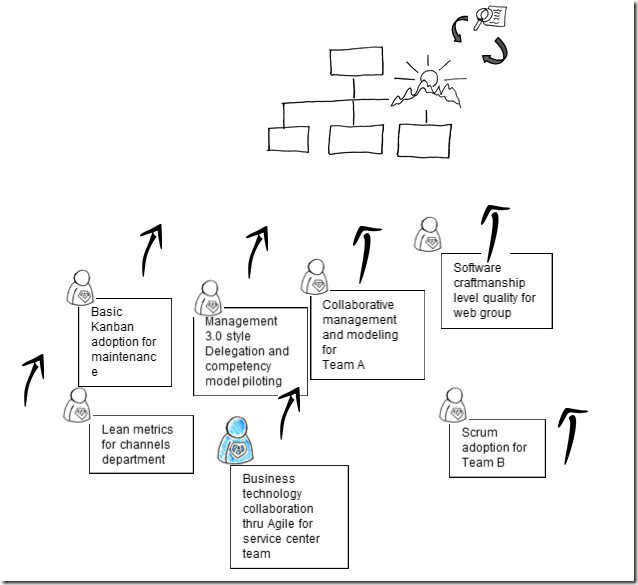
A Transformation Canvas Models the Elements of an Enterprise/Organizational Transformation
Just like a Change Canvas can be used to model the elements of a Minimum Viable Change, a change canvas can also be used to model the elements of an organizational transformation. We call this type of Change Canvas a Transformation Canvas.
The main difference between a Transformation Canvas and our previously discussed Change Canvas is one of scope, a Change Canvas used to model an MVC is concerned with improving the lives of a particular segment of change recipients within an organization.
A Transformation Canvas is used to model the concerns of either the entire organization or very large subset of an organization undergoing a transformation.
A Transformation Canvas can be validated through the implementation of one or more Minimum Viable Changes.
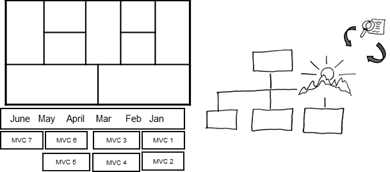
When using the Transformation Canvas this way, you're asking change agents to take part in a two tier, hierarchical planning process.
At the top layer an organizational Transformation Canvas is designed, and a suggested set of Minimum Viable Changes are prioritized using a Kanban style backlog.
As change agents become ready to work on new Minimum Viable Changes, Change Canvases are defined and validated through improvements experiments.
Using this approach feedback trickles from the lowest level, learning from Improvements Experiments impact the validity of elements on the MVC Change Canvas, and changes to various MVC Change Canvases impact the Transformation Canvas, and thus cause change to the transformation.
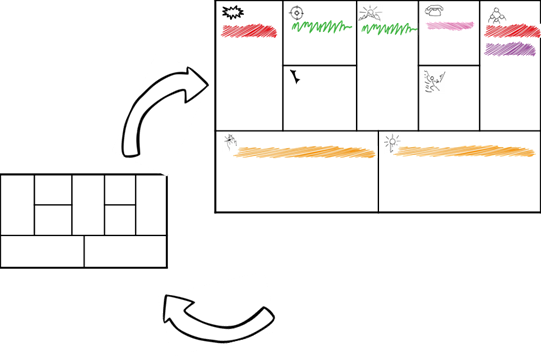
Shown below is an example of the transformation canvas. It's very similar to a regular change Canvas only larger, content is also geared towards discussing an entire transformation.
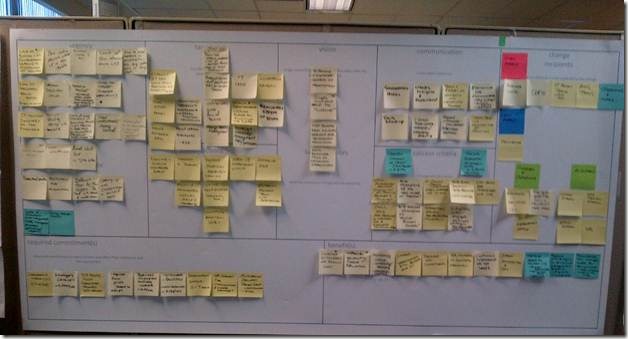 .
. Read More Lean Change - Chapter 5: Using a Transformation Canvas for Enterprise Change



